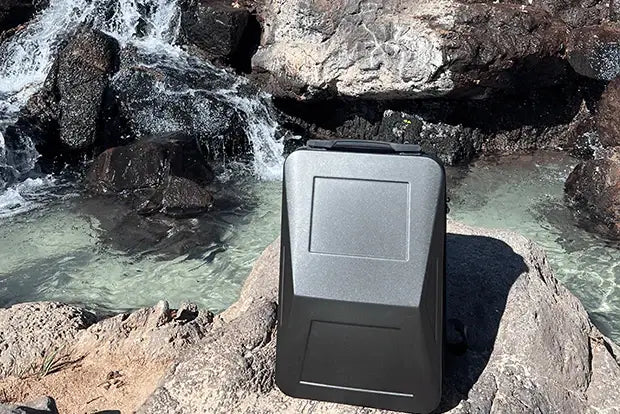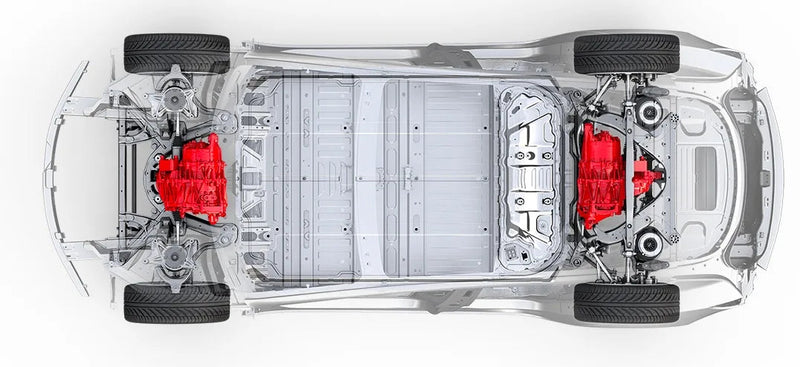Are Teslas AWD?
You may be aware of the several advantages all-wheel drive vehicles have over those with rear wheels. And you have undoubtedly also heard about how fantastic the cutting-edge, all-electric Teslas are. If you are wondering if all Teslas have an all-wheel drive, we answer all questions related to it here.
Tesla vehicles do not all have AWD (all-wheel drive). Rear-wheel drive (RWD) is an option for some versions, including the older Model S. But the majority of modern vehicles have all-wheel drives (AWD). Some affordable variants, like the Cyber Truck with a single motor, are RWD though.
Independent motors are used in AWD for improved durability and less maintenance. Additionally, for better traction control and handling, Tesla vehicles digitally regulate the torque of their wheels. Let's take a look at various Tesla models’ powertrains and if you are wondering which Tesla model is the best, we've got you covered.
Tesla Models: RWD vs. AWD
Model S
All Model S vehicles have AWD. The Model S Long Range boasts an AWD, a range of 405 miles between charges, and a 3.1 second 0-60 mph acceleration time.
The plaid version accelerates more quickly from 0 to 60 mph within 1.99 seconds, with an AWD, and can travel 396 miles in a single charge.
Model X
The Long Range version of the Model X has an AWD, 360 miles of range in a single charge, and a 0 to 62 mph within 3.8 seconds acceleration time.
The AWD plaid model has a 340-mile range between charges. It can go from 0 to 62 mph within 2.5 seconds.
Model 3
Although Tesla's Model 3 is a more inexpensive version of the Model S, it nevertheless offers many amazing driver assistance capabilities, including autopilot. You can choose between the Long Range, the Performance, the Standard Range trims for this model.
The rear-wheel-drive (RWD) Standard Range vehicle has a shorter acceleration time of 5.3 seconds to go from 0 to 60 mph and a shorter charge range of 262 miles.
Model 3's Long Range features an AWD, a charge range of 353 miles, and a 4.2 second 0-60 mph acceleration time.
Model 3 Performance accelerates faster from 0 to 60 mph within 3.1 seconds, features an AWD, and can travel 315 miles per charge.
Model Y
The company's line of compact SUVs is called Model Y. The Long Range variant, which is an all-wheel drive, can travel 315 miles per charge and accelerate from 0 to 60 mph within 4.8 seconds. With an AWD and 303 miles of range between charges, the Performance model offers a 0-62 mpg within 3.5 seconds acceleration time.
Cybertruck
The Cybertruck will be released in three trims. It is not being mass-produced at the moment. But I did my best to answer all your burning Cybertruck questions in a previous article.
The Single Motor is an RWD, has a battery range of more than 250 miles, and has a 0-60 time of less than 6.5 seconds.
The Tri-Motor and the Dual Motor AWD variants will also be available for the vehicle.
The Dual Motor has a range of more than 300 miles per charge and can accelerate from 0 to 60 mph within 4.5 seconds.
The more expensive Tri-Motor is an AWD, has a range of more than 500 miles per charge, and accelerates from 0 to 60 in under 2.9 seconds.
Tesla Roadster
The Tesla Roadster, which is marketed as the world's fastest car, is an AWD sports car with a fantastic 620 miles per charge range and an outstanding 0-60 mph within 1.9 seconds acceleration time.
What is an AWD?
Given their close resemblance, it might be difficult to tell an AWD (all-wheel drive) from a 4WD (four-wheel drive).
Additionally, as cars get more sophisticated, the distinction between 4WD and AWD is becoming less clear.
Tesla vehicles have intricate AWD mechanisms that operate without the driver's involvement. The cars' driving modes let drivers change and direct power to particular wheels.
All-wheel drive includes two types: full-time AWD and part-time AWD.
Full-Time AWD
Both the back and front axles are used in full-time AWD to distribute power to all the wheels. You consequently get more traction and leverage. Additionally, it is more effective on slippy or snowy roads.
No matter the technology, AWD is required for all vehicles by Tesla so the user does not find it difficult to customize the driving system to fit their driving preferences.
Some vehicles have an AWD system that is either built as a part-time or full-time AWD.
Part-Time AWD
In typical driving situations, the part-time all-wheel drive distributes torque to just the rear or front wheels, but not both, according to the model. When greater traction is required, the AWD cars also activate the two other wheels.
Furthermore, modern AWD systems use sensors to tell its electronics about the condition of the road, as opposed to older AWD systems. In order to boost traction, your vehicle will then react by either increasing or decreasing power going to the wheels.
How Does the AWD System Function in Tesla Vehicles?
A motor will be mounted at the back and the front if you choose a Tesla with an AWD. The setup of the motors may seem straightforward, but the software is where things really start to become complicated. The double motors are what increase a vehicle's overall range and thereby, the cost.
The microprocessor in a Tesla is adaptive, which means it will propel the wheel that is operating most efficiently. As a result, there may be times when the front receives more power as compared to the back wheels, or the other way around.
A Tesla with an AWD must be in transport or neutral mode in order to be towed. However, it is advised against towing the vehicle in order to protect the motors.
In Tesla vehicles, the AWD mechanism is extremely intricate and completely controlled by the software of the vehicle. Teslas may be complicated but they are fascinating vehicles nonetheless.
How Well Does the AWD System in Tesla Perform on Snowy Roads?
When driving on slippery or snowy roads, it's always a good idea to switch off an adaptive cruise or any form of cruise control and traction capabilities in your car. It is because cars tend to slide more when driving on snowy roads since they have less traction.
Because it cannot detect the slipperiness of the road, adaptive cruise and cruise control may even force your vehicle to speed. It will either lead to your vehicle spinning out on the road or ending inside a ditch.
However, what about autonomous or self-driving cars like Teslas? How well does the all-wheel drive handle snowy conditions?
The automobile company is a leader in the field of self-driving EVs. Their vehicles feature battery packs located on the floor of the car, and when coupled with various traction control mechanisms, these features result in vehicles with a lowered center of gravity.
Tesla vehicles can power their four wheels at various speeds to regulate their direction and have outstanding traction on slippery and snowy roads.
Conclusion
Residents of colder climates are familiar with the havoc that snow can cause, especially on roads. It poses significant driving difficulties because your vehicle barely gets any traction and you face difficulties braking and going uphill.
Tesla engineers the majority of their vehicles to have AWD for this very reason. Better traction on slippery surfaces and a reduced risk of drifting or spinning when turning or changing lanes are both advantages of an AWD. However, a Tesla car with an AWD will cost more because it is more advanced than a 4WD or RWD.












